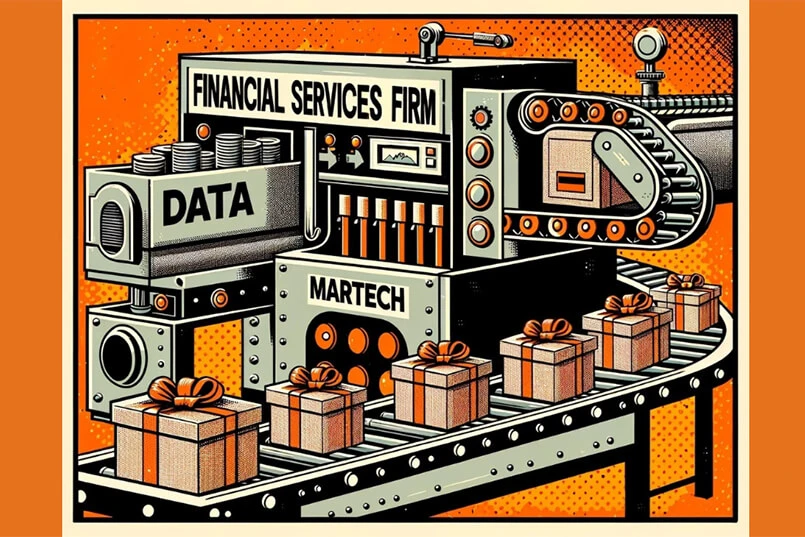The market is changing and becoming ever more complex, and therefore business and marketing strategies are changing to meet the challenge. But while strategies change, often marketing structure remains largely the same.
At best, companies will make capability additions where needed, simply adding to the legacy structures of the past. Others will vacillate between centralised and decentralised structures and variations in between. What is often required, however, is a rethink and re-evaluation of the marketing structure against the strategy and the requirements of that strategy.
The approach we take is a combination of qualitative and quantitative analysis – allowing us to examine the current resources and marketing investment to determine the challenges and opportunities – and then a design thinking approach to develop a series of structural opportunities for consideration.
Here are three case studies for marketing structural alignment projects we have delivered, or are in the process of delivering, for clients across a diverse range of categories and all with unique challenges, meaning that there is rarely a cookie cutter outcome.
Case Study 1:
Client Category: Corporate
Challenging Problem: The client’s marketing function was decentralised and operating across eight different business divisions. Budgets were fragmented, processes were inconsistent, and multiple campaigns and initiatives were being created independent of each other. The marketing effort involved more than 120 marketing FTEs working with an agency roster of almost 100.
Creative Solution: Over the course of the engagement, TrinityP3:
- Identified the main marketing requirements of the organisation, matched these to the existing skill sets across the marketing teams and recommended key structural changes;
- Created, developed and helped to implement a partially centralised marketing structure which still allowed business unit flexibility where required;
- Designed and implemented a uniform campaign development process, including an Engagement Agreement across all marketers and key agencies
- Benchmarked the FTE levels required to manage the marketing activities effectively, and worked with HR to implement changes;
- Developed and implemented an output-based cost model for all campaign elements and collateral deliverables;
- Managed the reduction of the agency roster from 100 to 15, designed and introduced a clear working model for the new roster, and ensured that all agencies understood their roles, areas of expertise and responsibilities
- Introduced a print procurement methodology and managed a tender process to reduce printing costs by more than 25%
Timeline: The work was completed over ten months
Result and feedback: The marketing function has moved from decentralised inefficiency and waste to a highly efficient, partially centralised model closely matching the specific marketing requirements of the organisation.
The agency roster – now 85% smaller – allows for a proper concentration of marketing spend with fewer, better connected and more committed agency partnerships.
Substantial cost savings – upwards of 25% of annual A&P – have been achieved through implementing an effective and efficient marketing structure, introducing print procurement efficiency and marketing process improvements, implementing an output-based cost model for all deliverables and ensuring more appropriate agency engagement within a right-sized roster model.
Case Study 2:
Client Category: – Automotive
Challenging Problem: The client’s marketing function was traditionally model and channel aligned within a conventional manufacturing and marketing communications structure.
There was a desire from management to move the company to a customer-centric model. To achieve this they wanted to review the current marketing structure and the external agency roster to ensure it was aligned to this new strategic direction.
Creative Solution: Over the course of the engagement, TrinityP3
- Collectively defined“customer centric” across the marketing team and organisation
- Mapped the implications of the strategy to structure and process by stakeholder groups internal and external;
- Developed a three phase implementation process including internal structural alignment and external roster alignment to the customer centric strategy;
- Identified the main marketing requirements of the “customer centric’ organisation, matched these to the existing skill sets across the marketing teams;
- Made recommended key structural changes to the marketing function to transform from product and channel to customer;
- Benchmarked the FTE levels required to manage the marketing activities effectively;
- Designed and implemented a uniform campaign development process, including an Engagement Agreement across all marketers and key agency partners;
Timeline: The work is ongoing, and at this point only the first stage has been completed, which has identified three more transition stages to be completed over the coming 2 – 3 years.
Result and feedback: The customer-centric approach has been a management strategy for a number of years and marketing had attempted to deliver the strategy through the selection of external agencies with CRM capabilities, but with suboptimal results.
The internal marketing structure was working against the strategy, with budget invested into the channels that the marketing teams were aligned with at the expense of the customer-focused communications. This was exacerbated by the fact that customer data and analytics and insights operated outside of the marketing team informing sales and the dealers.
The realignment moved the customer data to the centre of the marketing function with the development of customer segments aligned to products. The initial discovery and design work has provided the team with a road map for the transformation process.
Case Study 3:
Client Category: – Tertiary Education
Challenging Problem: The client’s marketing function was decentralised and operating across six different faculties and entities. Strategic governance was either inconsistent or entirely absent, budgets were fragmented and independently managed, there was no common campaign development process, and multiple campaigns and initiatives were being created across the organisation with no control or idea of ROI.
The marketing effort involved more than 90 marketing FTEs working with an agency roster of 77 on an overall spend of less than $6m annually.
Creative Solution: Over the course of the engagement, TrinityP3:
- Identified the main marketing requirements of the organisation, matched these to the existing skill sets across the marketing teams and recommended key structural changes;
- Created, developed and helped to implement a centralised marketing structure with overall budget control;
- Designed and implemented a uniform campaign development process, including an Engagement Agreement across all marketers and key agency partners;
- Benchmarked the FTE levels required to manage the marketing activities effectively, and worked with HR to implement changes;
- Developed and implemented an output-based cost model for all campaign elements and collateral deliverables;
- Managed the reduction of the agency roster from 77 to 20, designed and introduced a clear working model for the new roster, and ensured that all agencies understood their roles, areas of expertise and responsibilities
Timeline: The work is ongoing, and is on course for completion over a total period of six months
Result and feedback: The marketing function is now moving from decentralised inefficiency and waste to a highly efficient, partially centralised model that better matches the specific marketing requirements of the organisation.
The rationalised agency roster (already in place) allows for a realistic concentration of marketing spend and strategic responsibility among far fewer agency partnerships.
Substantial cost savings – upwards of 25% of annual A&P – are being achieved through implementing an effective and efficient marketing structure, marketing process improvements, an output-based cost model for all key deliverables and ensuring more appropriate agency engagement within a right-sized roster model.
You can find out more on how we restructure your marketing to meet the needs of your marketing strategy here






